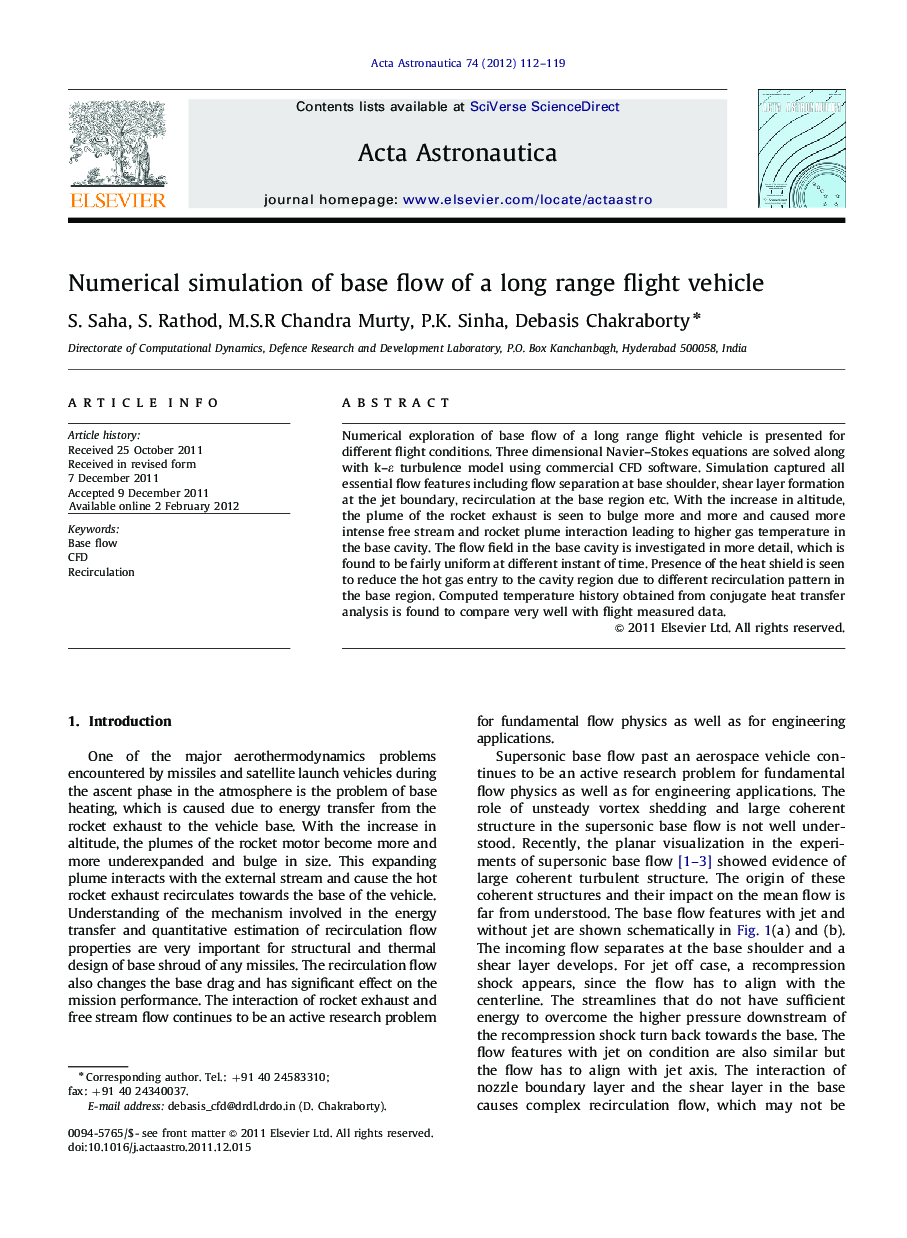| کد مقاله | کد نشریه | سال انتشار | مقاله انگلیسی | نسخه تمام متن |
|---|---|---|---|---|
| 1715420 | 1519974 | 2012 | 8 صفحه PDF | دانلود رایگان |

Numerical exploration of base flow of a long range flight vehicle is presented for different flight conditions. Three dimensional Navier–Stokes equations are solved along with k–ε turbulence model using commercial CFD software. Simulation captured all essential flow features including flow separation at base shoulder, shear layer formation at the jet boundary, recirculation at the base region etc. With the increase in altitude, the plume of the rocket exhaust is seen to bulge more and more and caused more intense free stream and rocket plume interaction leading to higher gas temperature in the base cavity. The flow field in the base cavity is investigated in more detail, which is found to be fairly uniform at different instant of time. Presence of the heat shield is seen to reduce the hot gas entry to the cavity region due to different recirculation pattern in the base region. Computed temperature history obtained from conjugate heat transfer analysis is found to compare very well with flight measured data.
► RANS simulations are carried out to analyze base flow of a long range flight vehicle.
► Simulation captured all essential flow features including shear layer formation and recirculation.
► Gas temperature in base cavity is found to be very high.
► Computed temperature history at base cavity compare very well with flight measured data.
Journal: Acta Astronautica - Volume 74, May–June 2012, Pages 112–119